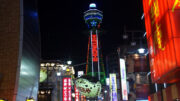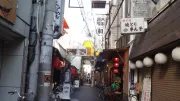The National Bunraku Theatre is an arts centre dedicated to preserving, developing, and passing on traditional performing arts from the Osaka and Kyoto region, historically known as Kamigata. The main focus of the theatre is a form of puppet drama called Ningyō Jōruri, more commonly known as Bunraku.

Bunraku has been a popular art form for centuries. During the Edo period (1603–1868), these puppet performances became a major source of entertainment for the common people. Today, the National Bunraku Theatre is one of the few places in the world where audiences can still experience this fascinating art form. English programs and earpiece translations are available for most performances, making it accessible to international visitors.
Bunraku plays are held only a few times a year, with each season running for about two weeks. When Bunraku performances are not scheduled, the theatre hosts other traditional arts and cultural events. The centre also plays a significant role in archiving historical materials related to Bunraku and Osaka’s performing arts.
Opened in 1984, the theatre’s architecture blends traditional Edo-period elements with modern Japanese design, incorporating advanced technology while maintaining a strong cultural aesthetic.
The Bunraku Puppet Show
Bunraku is considered one of the most sophisticated forms of puppetry in the world. Unlike marionettes, these puppets are not controlled by strings. Instead, three puppeteers operate each character. The puppeteers typically dress in black robes and sometimes wear black hoods to blend into the background. However, at the National Bunraku Theatre, the lead puppeteer often performs without a hood, allowing the audience to see their facial expressions and skillful control of the puppet.
The puppets themselves are quite large, about half the size of an adult. The stories performed in Bunraku usually explore themes of social or moral conflict and human emotion. One of the most famous Bunraku playwrights is Chikamatsu Monzaemon (1653–1725), whose works remain widely performed today. The origins of Bunraku date back even further, to around the 10th or 11th century, when similar puppet performances were popular in Osaka, Kyoto, and Awaji Island in the Seto Inland Sea.
Access:
The theatre is easily accessible by public transport:
- Take the subway to Namba Station.
- Transfer to the Sennichimae Line and travel one stop east to Nipponbashi Station.
- Use Exit 7, which brings you directly outside the theatre.




